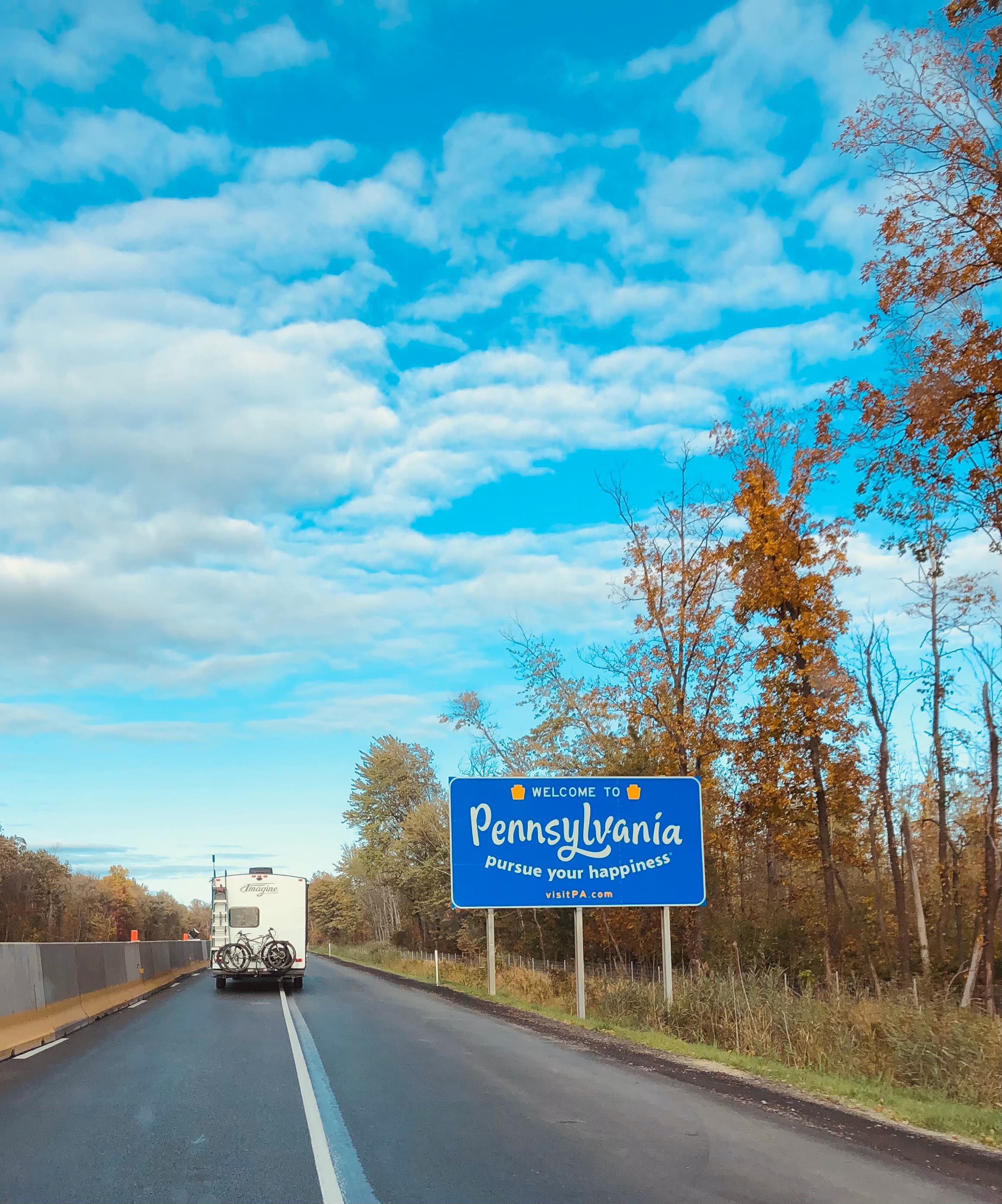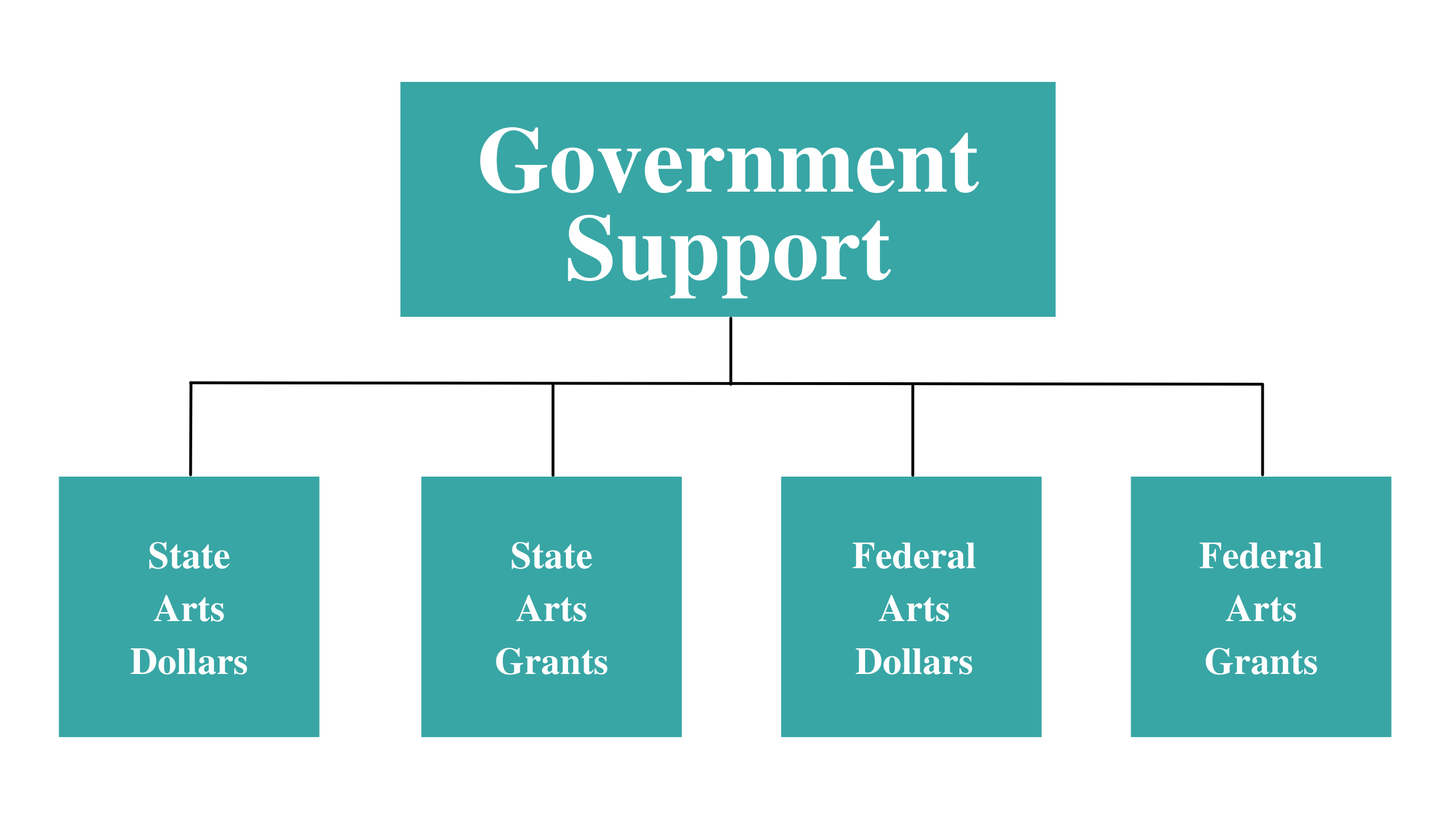Arts Vibrancy In Pennsylvania
How YOU can help your community become more vibrant!

Southern Methodist University's DataArts (National Center for Arts Research) is one of the leading institutions for research in the arts. In 2020, they released the yearly "Arts Vibrancy Index Report."1
This report gives insights into communities across the United States, including Washington D.C. and the five U.S. territories, in regards to their Arts Vibrancy.
Arts Vibrancy2: All cities can learn from each other’s strengths, so highlighting and celebrating communities big and small, located in every region, that have cultivated higher levels of arts activity per person living in the community in important. Using the term “vibrancy” in keeping with Merriam-Webster’s definition of the word to mean “pulsating with life, vigor, or activity” is the root of this concept.
This index is calculated using the following categories:
These calculations are based on percentiles, per county. "There are approximately 3100 counties in the country. So, if your county scores a 90, then there are approximately 310 counties that scored higher."3 The most vibrant county is Teton County, Wyoming. It is the home of Yellowstone National Park, and is in the 100th percentile in every category.
Below is a breakdown of the categories mentioned above. Each smaller box that leads into the major subject is calculated with all of the other smaller boxes to produce the percentile for each category. Then, each category is averaged together to come up with the overall percentile of each county.


Now that the background and methodologies have been explained, the next section will look at a case study. This will allow for a better understanding of arts vibrancy and these methodologies in context. The case study is looking at Allegheny County, Pennsylvania. The largest city in this county is Pittsburgh.



Let's Look At This In Context
Case Study:
Allegheny County, PA

Pennsylvania has 67 different counties. The highest ranking county is Allegheny County, with an overall index of 96, located in Southwestern Pennsylvania.4 The lowest ranking county is Cameron County, with an overall index of 25, located in North Central Pennsylvania.5 This map below depicts the arts vibrancy across the state of Pennsylvania, by county.

Allegheny County has approximately 1.2 million citizens, houses hundreds of arts and culture institutions, and numerous universities. The Arts Vibrancy Index has the following numbers:
- Arts Providers: 97
- Arts Dollars: 99
- Government Support: 94
- Socio-economic: 93
- Other Leisure: 99
Below is a breakdown of Allegheny County's Arts Vibrancy Index. By scrolling over the sections of the chart, the exact percentile will pop up for each sub category. These numbers are impressive overall, but there is still room for improvement, especially in the "Socio-economic" category. The two sections that have lower percentiles are "% Not in Poverty" (its at 66) and "% Employment" (at 73). These are contributing to a lower percentile ranking.
However, Allegheny County has very high scores in other areas. For example, Arts Providers is very high. This is due to Allegheny County being host to 551 arts and culture organizations.6 Some of these include the widely known Pittsburgh Cultural Trust, Pittsburgh Glass Center, Pittsburgh Ballet, and the Pittsburgh Opera.
However, the two highest arts vibrancy scores fall in "Arts Dollars" and "Other Leisure." "Other Leisure" should be a fairly obvious one when trying to figure out why the percentile is so high. Pittsburgh is home to not one, not two, but three major league sports teams: Pittsburgh Steelers, Pittsburgh Pirates, and Pittsburgh Penguins. These teams bring in millions of people and dollars to the city during their respective seasons. There are many hotels, bars, and restaurants that are established in Pittsburgh to help carry the weight of visitors for these games.
So, what does that have to do with art?
Well, if a moment is used to stop and think, it becomes clear. Artists are needed to create graphic designs for the sporting teams, as well as to operate film and media equipment on the field. The hotels need architects to design their buildings, and wall art to decorate their rooms. Bars and restaurants are moving towards commissioning artists for murals outside of their buildings to attract more customers, some sell art right off their walls, while others host open mic nights. All of these elements, and many more, add to the arts vibrancy of a community.
Now, with these elements in mind, lets move on to "Arts Dollars." There are four categories that are calculated into "Arts Dollars": Program Revenue, Contributed Revenue, Total Expenses, and Total Compensation. Out of the four, two of them are based on citizen's willingness to pay for the arts.
This is where a lot of demographic data such as population and income data come into play. The more people who live in a certain area, the higher the possibility that they will want to spend money on the arts. The higher the income in a certain area, the more disposable income that can be used. In addition, education has been proven as a major contributing factor to who does and does not engage with the arts.7
These demographic pieces can be difficult to conceptualize on their own. It is easier to look at them across a series.


Looking At Arts Vibrancy Across Pennsylvania

Demographic data in relation to arts vibrancy is best understood when looking at a few counties in comparison. This section will be looking specifically at the Cameron, Susquehanna, and Allegheny counties.
The following counties' demographic data will be examined alongside its arts vibrancy8:
- Cameron County (Low Vibrancy - 25)
- Susquehanna County (Medium Vibrancy - 54)
- Allegheny County (High Vibrancy - 96)
Like mentioned before in the case study of Allegheny County, population plays a substantial part in arts vibrancy. As shown by the graph and the Arts Vibrancy Index, population and arts vibrancy have a direct correlation.
This correlation is mostly due to the fact that the arts, like sports and restaurants, flourish when people can come together as a group.
Art does not exist in a vacuum. It is meant to be experienced by and with other people.
In addition, population is a key factor in funding. Patrons purchasing tickets and giving donations is an element, but government funded grants and support often stem from "amount of people reached." In a more populous city, the more likely that number is larger, making it more likely that the grants will be given.
So, what about donations and ticket prices?
The amount of donations given by a patron, as well as their willingness to pay for a ticket to an event, is directly related to their income.
Average Household Income
This graph shows the average household income for the counties, in addition to the average for the United States. As mentioned, ticket prices are a portion of the "Arts Dollars" calculations. However, tickets can easily be over $100, even $200 for a single show. In an area with lower income, these prices are an impossibility.
As mentioned in the case study above, the percent of people in poverty affects arts vibrancy. It falls under the "Socio-economic category," and as the graph shows, there is an inverse correlation between the percent of people experiencing poverty and the arts vibrancy of the county. The state of Pennsylvania data is given for comparison.
If people are in poverty, they cannot pay for art. They are worried about simply surviving.
Education
Education is found to be directly correlated with higher participation in the arts. In 2017, the National Endowment for the Arts (NEA) released a report on the findings from the Survey of Public Participation in the Arts. The survey found that those with a higher degree of education were more likely to engage with the arts than those without.9
Pennsylvania is not the only state that experiences this wide breadth of inequality when it comes to access to the arts.
As shown before, the places that are the most impoverished have less access to the arts. These places, rural most of the time but not always, deserve to have arts access in some capacity.
At the end of the day, the arts do not have enough funding to make every area vibrant. But, that does not mean that it CAN'T have enough.
Here are some ways you can help your community become more arts vibrant.
So What Can YOU Do?

Here are 6 ways you can help your community become more vibrant.
1. Hire more artists.
This seems like an obvious one. However, there is a reason that the very first thing measured on the Arts Vibrancy Index is amount of arts employees. Art does not exist until someone makes it. If you or your organization has the capabilities to hire/commission an artist, it should definitely be considered.
2. Create more community-based programming. Then actually go to it.
Free programming. Children's programming. Elderly programming. Creating more vibrancy in your community means understanding your community. Like mentioned above, income and ticket price plays a role in people being able to engage with the arts. By creating more discounted/free events, the more likely people are going to want to come and engage. However, be careful when creating an event or program for a section of your community you have not reached out to before. People are incredibly perceptive and can tell when an act of ally ship is performative. Make sure to do the necessary research and communication first.
3. Don't just apply to grants- ask for more funding for your state from the NEA.
Like all government entities, the National Endowment for the Arts (NEA) is funded by appropriations from the federal budget. (Here's a neat video on how that process works: https://www.youtube.com/watch?v=2RJPAf8Vc3g.)
So, while organizations are doing what they can to apply for funding, you should be calling your legislatures and asking for more dollars to be allocated to the arts. While NEA funding has been growing over the years, they do not even have enough funding for $1 per US Citizen. If we want to make our communities more vibrant, we are going to need the resources to do so.
4. Support Mom & Pop shops and restaurants.
Instead of going to corporate stores or buying online, try going to local artist and craftsman shops. Instead of giving gift cards to your coworker from that chain restaurant that no one really likes, consider a place that sells art right off its walls, or hosts open mic nights.
5. Create training programs.
Art is used not only to create joy and foster creativity, but to help those who are in need. There are many reform and rehabilitation programs that use the arts to connect with the people who are in them. For example, Shining Light is a nonprofit organization that helps the incarcerated end recidivism. They incorporate art into every one of their programs.
6. Partner with other organizations.
This one will help you have the most reach. As said before, art does not exist in a vacuum. It is here for everyone, and by partnering with other organizations in the area, the probability of attracting at least one new person is incredibly high.



Image Citations
- Addy Mae. Unsplash.
- Vidar Nordli Mathisen. Unsplash.
- Joshua Peacock. Unsplash.
- Venti Views. Unsplash.
- Chris Murray. Unsplash.
- Last Podcast On The Left. https://www.viagogo.com/Theater-Tickets/Comedy/Last-Podcast-On-The-Left-Tickets/E-6522272.
- Tetiana Shyshkin. Unsplash.
- Ari He. Unsplash.
- Eldar Nazarov. Unsplash.
